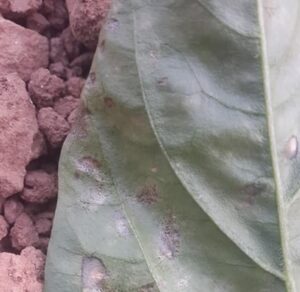Thrips damage and control
Thrips are a pest of many agricultural crops. Thrips belong to the order Thysanoptera and feed on plant sap.
There are over 5,500 species of thrips and about 75 species of them are pests of horticultural crops. They have an elongated body and most species are up to 1.5mm in length and have two pairs of narrow wings. Their color may range between light yellow to black.
Common thrips species in vegetables and flowers:
- Banded greenhouse thrips (Echinothrips americanus)
- Tomato thrips (Frankliniella schultzei)
- Melon thrips (Thrips palmi)
- Western flower thrips (Frankliniella occidentalis)
- Plague thrips (Thrips imaginis)
- Onion thrips (Thrips tabaci)
DAMAGES CAUSED BY THRIPS
Thrips have rasping and sucking mouth parts and during feeding, they first rasp the cells and then suck up plant sap. Therefore, the direct damage caused by thrips includes flecking or silver-grey patches on the leaves, fruits and flowers.
Another common direct damage caused by thrips is deformation of leaves and flowers. When thrips feed on young plant parts, that are still growing, deformations are formed as a result of undamaged cells that develop around cells that were damaged by the thrips. It is worth noting that when deformation symptoms show up, the pest may no longer be present.
Additional direct damages caused by thrips may include small fruits, fruit drop and leaf drop.
Thrips can also cause indirect damages. They act as a vector to various plant viruses.
THRIPS LIFE CYCLE
Development stages of thrips include eggs, two nymph stages, pre-pupa, pupa and adults. The duration of each development stage is temperature dependent.
Females may lay 80-30 eggs, depending upon species, host and temperature. They may lay eggs inside plant tissue, underside of the leaves, inside flowers or along the stems.
Adult thrips may live for 2-6 weeks.
SCOUTING METHODS
In crops that are susceptible to thrips, regular scouting and monitoring are important in order to detected infestation as early as possible.
Using blue or yellow sticky tapes as traps can help in monitoring thrips, as thrips are attracted to the colored traps. In greenhouses, it is recommended to use at least 1 trap per 1,000 square feet (or 100 square meters). Traps must be hanged just above the plants and inspected regularly.
It is also recommended to inspect individual plants. Slightly shaking plant leaves and flowers over a white paper sheet may reveal hiding thrips that will fall on the paper. A magnifier glass can be used to identify them.
Thrips can also be detected by their damage symptoms or signs they leave behind. Black small spots, which are the thrips feces, will usually appear next to damage symptoms.
THRIPS CONTROL
Biological control – beneficial insects. When thrips pressure is low or moderate, beneficial insects can provide good control. Predatory mites, such as Amblyseius cucumeris and Amblyseius swirskii feed on the nymph stages of thrips. The predatory bug, Orius, feed on all stages of thrips life cycle, including adults.
Insecticides – insecticides such as neem oil and Azadirachtin can provide moderate control of thrips and usually do not harm beneficial insects. Spinosad is a natural insecticide that was found to be very effective against thrips. Pyrethrins insecticides are also used to control thrips.
Thrips are usually difficult to control with insecticides, mainly due to the fact that in most of their development stages they are hard to reach with spray and protected from insecticides.
Cultural practices – multiple cultural practices can greatly reduce thrips infestation. Such practices include eliminating weeds, using anti-insect nets and sticky traps, using mulch etc.
SUMMARY TIPS:
- Rotate your crops to reduce the chances of thrips populations building up in your soil.
- Keep your field or greenhouse clean and free of debris, as thrips can hide in these areas and lay eggs.
- Use trap plants, such as yellow sticky traps or plants with bright flowers, to attract and trap thrips.
- Use physical barriers, such as insect netting or row covers, to protect your plants from thrips.
- Do not rely on a single control method, as thrips are difficult to control and may require a combination of cultural, physical, and chemical methods.





